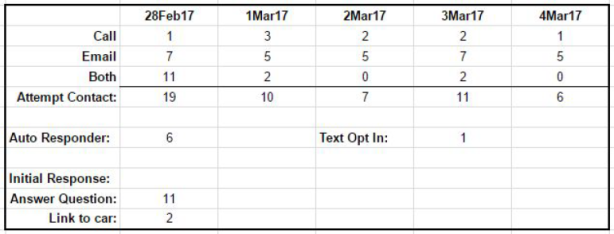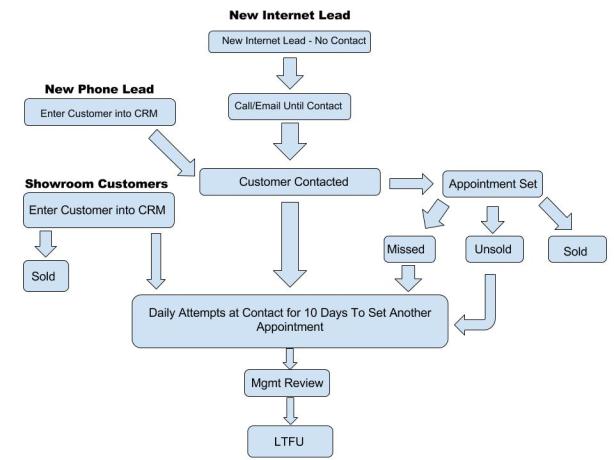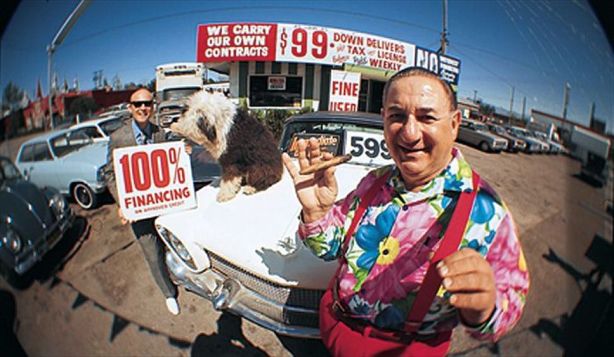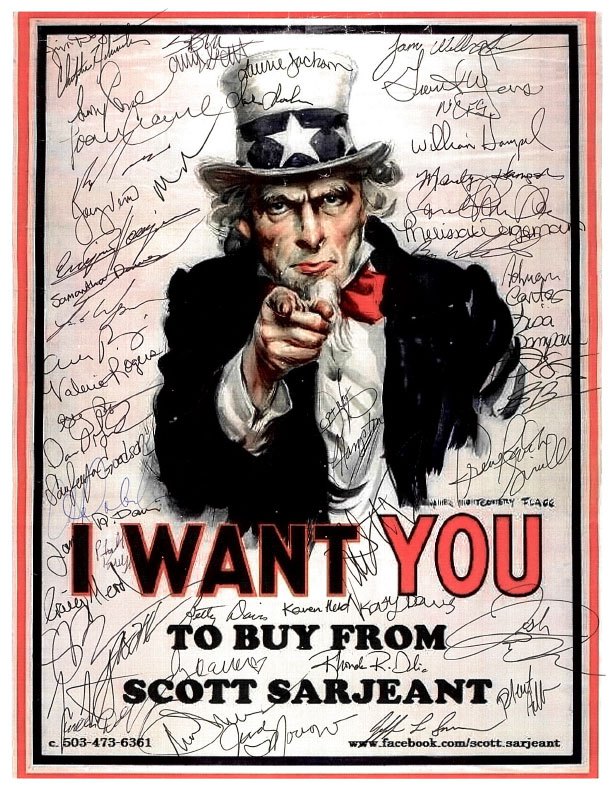One of the most essential elements of a successful internet department is to have a well defined follow up process. How you handle and respond to leads when they come in to the dealership is crucial to the success of not only the department but also the dealership.
There are statistics out there that will say people spend on average 12+ hours shopping online for a vehicle prior to visiting the store. Once they customer makes the transition from shopping online to going to the dealership, they visit, on average, less than 2 dealerships before making a purchase. Drilling it down even more, most people will submit an internet inquiry prior to going to the dealership to either confirm availability or get a question answered prior to showing up to the dealership.
Even though the majority of the traffic for a store comes in through the internet very few stores actually put any thought into their internet process. Recently I conducted a mystery shop on an auto group with 20 stores. I submitted the leads at night so that I could fully test their follow up process (to see if they had auto responders set up). I also tested all 20 stores to see if their process was uniform across the auto group.

Of the 20 stores, I got a response from only 19 of them. I will note that I have seen instances where more than one store will share CRM access and two of the stores within the group are located at the same address.
Only 6 of the stores had an auto responder set up. Only 1 store sent me a text message asking me to opt in to text.
With every lead that I submitted, I asked a question. Only 11 of the 20 stores answered my question.
Only 2 of the stores provided a link back to the car that I actually inquired about.
The initial responses from the auto group were a failure. Put yourself in the shoes of a shopper. You’re looking online at vehicles. Between dealership websites and 3rd party sites (such as cars.com, TrueCar, AutoTrader….) you have looked an hundreds of cars. You selected a few to inquire about. Within 10 minutes of leaving the site, you have already forgotten which car you were interested in. Forget about remembering the next morning. Failing to include something as simple as a picture or a link back to the actual car they inquired about sets the whole internet process up for failure.

The next biggest failure after that is not answering the question and instead trying to get me in the store. Again, think in the mind of the consumer. If they are willing to answer my questions when I submitted the lead then why would I have confidence that they will answer my questions when I show up at the store?
Less than half of the stores continued to try and attempt to follow up with me after the first day. In fact, 5 of the stores didn’t even attempt any contact after day 1.
One store never called but instead only sent emails. Another store only called me on day 2 and sent emails on all other days.
Only 12 of the stores attempted to call me during the next business day. That’s 12 out of 20 stores that attempted to call; that’s 60%. All of the leads included a phone number that enabled me to track who called.
As stated before, the problem with most dealerships is that they put very little thought into their process. Yet, the internet is where the majority of the traffic to the store comes from. The majority of the dealerships will use the standard follow up process that is set up in the CRM by the CRM company. Most of the people at the CRM companies have spent very little time actually handling internet leads.
There are 2 main parts to the internet follow up process. The most important part is the phone call campaign; how many times and on what days are your internet reps supposed to attempt contact via phone. The dealership has some level of control that they can exhibit over this part of the process. They can schedule the phone calls all that they want, but if their people don’t actually make the calls, then scheduling them is worthless.
It’s the other part of the process, the email campaign, that the dealership has control over. Not only can the dealership set the email tasks, but they can also set up templates that they want the reps to use. Taking it one step further is the use of automation when it comes to email follow up. This relieves the dealership of having to rely on the rep to actually type up and or simply hit send on the email task. The only part of the email campaign that shouldn’t be automated is the initial inquiry. After that, the email campaign should be put on autopilot until there is a response. After there has been a response, the automation should stop and a different follow up process should take over.

The goal of the follow up process should be to take the lead from submitting the inquiry, to setting an appointment, showing up to the dealership and then buying a vehicle.
I can tell you from the mystery shop of the auto group with 20 stores and mystery shopping numerous other stores, that most reps do not call or email after the first couple of days. Over time this lack of follow up with cost thousands, if not hundreds of thousands of dollars in potential loss profit. Not to mention the thousands of dollars that the dealerships are spending per month in advertising expense.

To help mitigate these losses, the dealership needs to:
- Establish their follow up processes
- Phone campaign
- Email campaign
- With the exception of the first response, automate their email campaign
- Once a response is received, change to a different process
- Establish follow up processes for:
- Inquiry responses
- Appointments
- Appointments Missed
- Post Showroom
- Sold
Below is an outline for a sample follow up process that lasts for 60 days, with another 60 days of a drip campaign that is designed to convert the online shopper into a show room customer.
SAMPLE FOLLOW UP PROCESS
Internet Lead – No Contacted
- 60 days of automated email follow up until contact made
- Separate follow process for:
- Trade-In inquiries
- Finance Applications
- Standard Process
- Salesperson reviews the lead and sends the appropriate initial response
- Insert pic that is hyperlinked on vehicle inquiries
- Salesperson calls the lead until contact made
- Text to have customer opt in for text messaging
- Built in tasks for sales manager to verify that follow up is being done
Internet Lead – Contact Made
- Salesperson required to email and call until appointment set
- Tasks set up to have manager verify follow up being done
Appointment Set
- Salesperson enters the appointment into the CRM
- Email/Call tasks to confirm appointment
Appointment Missed
- Missed appointment email when appointment missed
- Email from manager when appointment missed
- Phone tasks for 10 days to call customer and reschedule
Showroom Unsold
- 10 days of post showroom follow up scheduled for salesperson to follow up
- Email sent from sales manager find out what we need to do to put deal together
Long Term Follow Up
- Email drip campaign and phone calls set up for days 60 – 120
- Calls/Emails set up every 15 days
Links in emails – Provided dealership uses Google Analytics
- Setup UTF codes on all links to track click thru to website from emails
- Provide links to:
- New Cars
- Used Cars
- Trade Evaluation
- Credit Application







